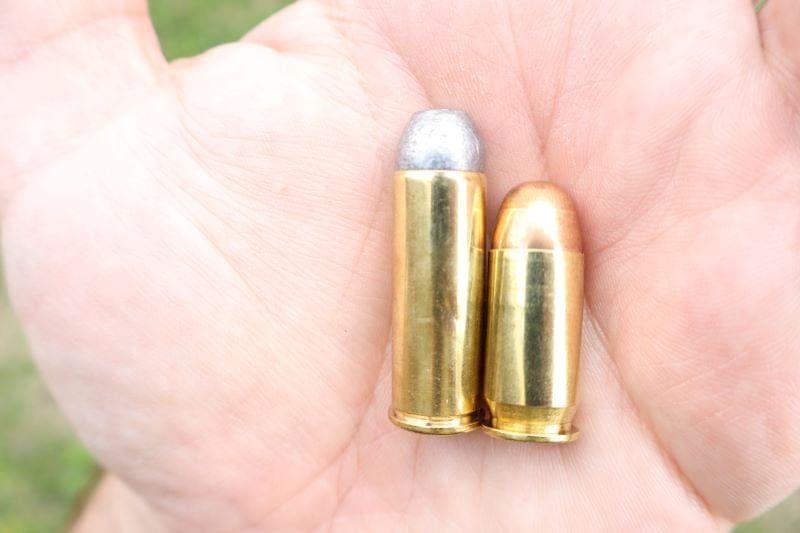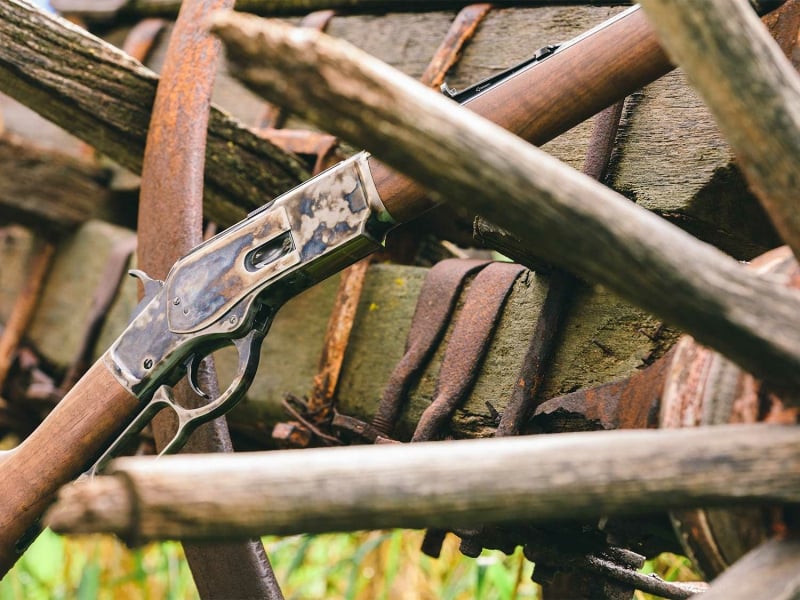The .45 Colt cartridge has been punching holes for over 150 years. Today, the .45 Colt round is as popular as ever and is commonly seen used in personal protection or cowboy games. Follow along as we explore the development of the .45 Colt cartridge, including how it became known as the .45 Long Colt and what it is best used for today.

What Came Before the .45 Colt?
The .45 Colt was the culmination of the US Army’s decades of struggles with handgun technology. Before its adoption along with the Colt Single Action Army in 1873, the Army used Colt’s .44 caliber percussion revolvers. These handguns date back to the use of the Walker Colt during the Mexican-American War, where the .44 caliber round was found to be excellent for stopping horses in combat.

Colt previously bridged the gap between muzzle-loaders and cartridge guns by converting some of the 1860 models to the .44 Colt cartridge, a metallic cartridge version of the load the Army fielded in paper cartridges during the Civil War. It used a 210-grain bullet, over 28 grains of black powder. The new revolver was not confined to old muzzle-loading designs and was chambered in an even more powerful cartridge. That was the .45 Colt. It used a heavier, 255-grain bullet, over 40 grains of black powder, with a muzzle velocity hovering at about 1000 feet per second. The .45 Colt was an improvement over the .44 Colt and could stop a horse up to 75 yards away.
How the .45 Colt Became the .45 Long Colt
Today, the .45 Colt is sometimes referred to as the .45 Long Colt. That implies the existence of a .45 Short Colt round that did not exist. The confusion originated when the Army started fielding a number of S&W No. 3 Schofield revolvers in 1875. Col. John Schofield headed the project that was meant to provide the cavalryman with a revolver that could be easily reloaded on horseback. The top-break Smith & Wesson exposed all six chambers for loading. Conversely, a user with a Colt had to poke out his empty cases and reload the cylinder one round at a time through a loading gate on the right side of the pistol.
The Army approached Smith & Wesson to chamber their revolver in .45 Colt, but the round was too long to work in their automatically ejecting revolver. The Schofield was chambered in a shorter .45 S&W round. Rounds would end up with the wrong guns as a result. The S&W revolvers could not fit .45 Colt ammo at all. The Colt could fire .45 S&W, but the rim on that round was pronounced, and you could only get three rounds into the revolver. Three rounds are better than zero, but the Army paid for a six-shooter.

A Belated Rifle Round
The .45 Colt is predominantly a handgun cartridge. However, it would not be uncommon to find a lever-action rifle in that caliber as well. Rifles chambered in .45 Colt did not exist in the 19th century. Original .45 Colt loads used a soft balloon-head case with a thin rim that did not lend itself well to extracting from rifles. Today’s solid head cases don’t pose this problem.

Standard .45 Colt ammunition is slightly less powerful than a rifle compared to the .44-40. The 255-grain bullet still travels at over 1000 feet per second from a rifle barrel, yielding over 500 foot-pounds of energy. At closer distances, the .45 Colt is more than capable of taking whitetail deer. The case for hunting larger game with the old .45 Colt gets even better with recent developments of higher-pressure ammunition.
The Magnum Treatment
.45 Colt comes in various power factors. Standard loadings for the .45 Colt consist of a 255-grain lead bullet traveling at about 750 feet per second. Some companies still load .45 Colt with black powder and can achieve velocities closer to 1000 feet per second. Hand-loaders started to experiment with 300-grain jacketed or hard-cast rounds loaded at higher pressures. Eventually, firms like Buffalo Bore and Underwood started loading these .45 Colt rounds commercially. These .45 Colt loads rival the energy of the .44 Magnum and are often called “Ruger Only” loads.
.45 Colt Today
The .45 Colt has left a lasting legacy in the gun world, and even in 2024, there is plenty the round has to offer. While not as thrifty as more modern semi-auto and revolver cartridges, the .45 makes up for its higher price tag with its sheer versatility. Bullets, brass, and other components are readily available for the hand-loader. But there is plenty of variety in both factory ammunition and firearms. Almost all newer-production lever action or pump action designs come offered in .45 Colt. All things considered, that is quite a presence for a round born a century and a half ago. The guns have changed, and so has the world, but the legend remains the same.

